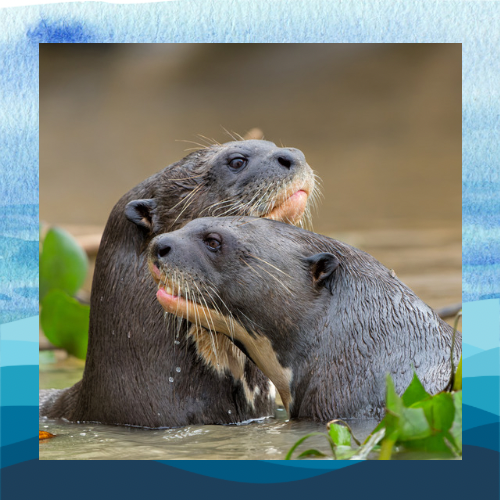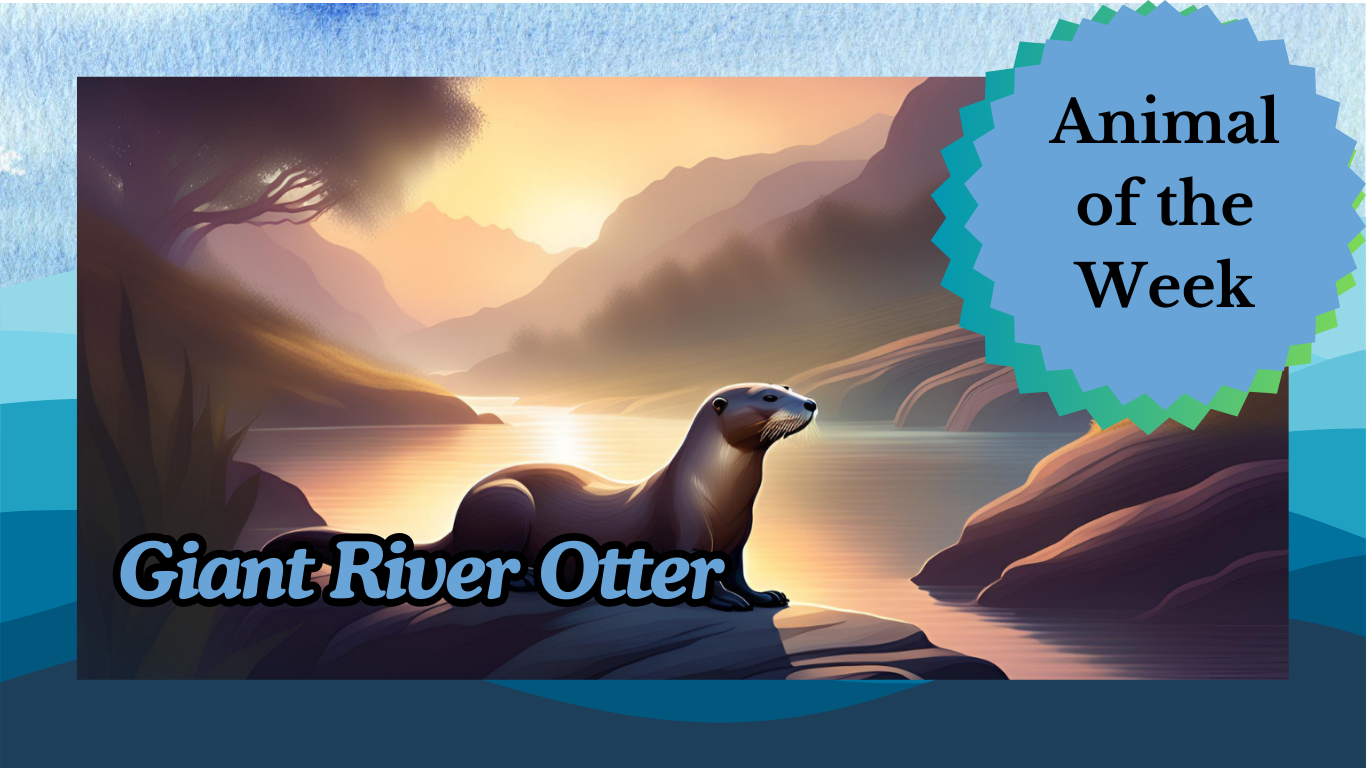The giant river otter (Pteronura brasiliensis) stands out as one of the most intriguing creatures inhabiting the rivers and lakes of South America. Known for its social nature, impressive size, and unique vocalizations, the giant river otter has captured the interest of researchers and wildlife enthusiasts alike. This article delves into the life of these remarkable animals, highlighting their behavior, habitat, and conservation status, along with some fascinating facts that set them apart from other species.
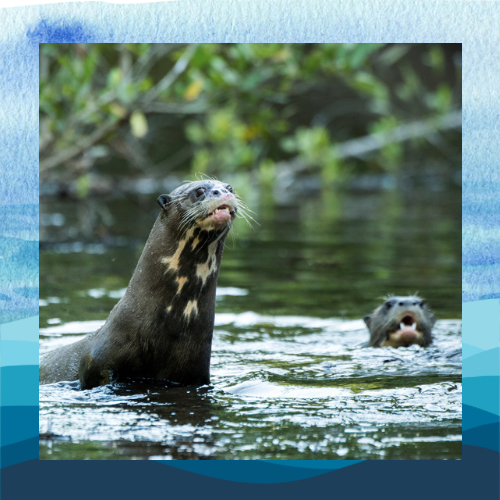
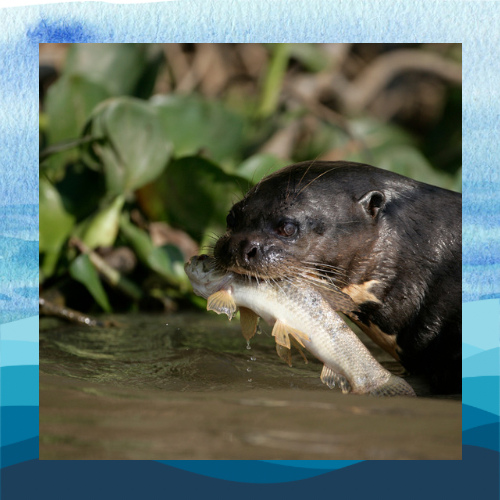
Physical Characteristics and Habitat
As the largest member of the otter family, the giant river otter can grow up to 6 feet in length, with males being slightly larger than females. Weighing between 50 to 70 pounds, these otters are muscular and agile, perfectly adapted to their aquatic environment. Their fur is dense and velvety, varying in shades of brown with distinctive cream-colored throat patches that are unique to each individual. These markings are often used by researchers to identify and monitor specific otters in the wild.
The giant river otter is native to the river systems of the Amazon, Orinoco, and La Plata basins, favoring slow-moving rivers, lakes, and swamps with abundant vegetation. These habitats provide the otters with shelter, as well as a plentiful supply of fish, their primary food source. The otters build large dens, known as holts, along riverbanks, often using dense vegetation or fallen trees for cover. These dens are essential for raising young and offer protection from potential predators.
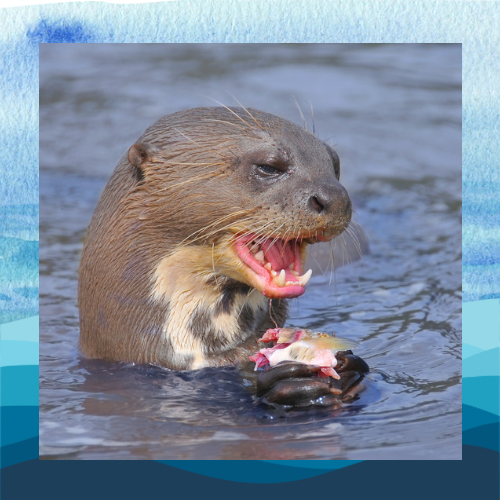
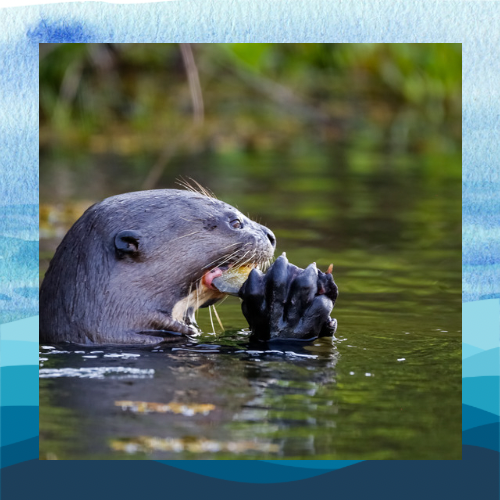
Social Structure and Behavior
One of the most distinctive features of the giant river otter is its highly social nature. These otters live in family groups, typically consisting of a breeding pair and their offspring from several years. Group sizes can range from 2 to 20 individuals, though most consist of 3 to 10 members. The social bonds within these groups are strong, with members cooperating in hunting, grooming, and defending their territory.
Giant river otters are territorial animals, with each group maintaining a territory that can span several kilometers of river. These territories are marked with scent from glands located at the base of their tails, as well as through vocalizations. The otters are known for their loud and distinctive calls, which include whistles, growls, and screams. These vocalizations play a crucial role in communication within the group and in deterring potential intruders.
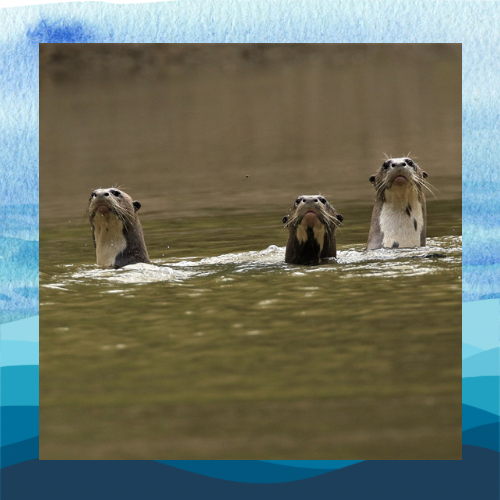
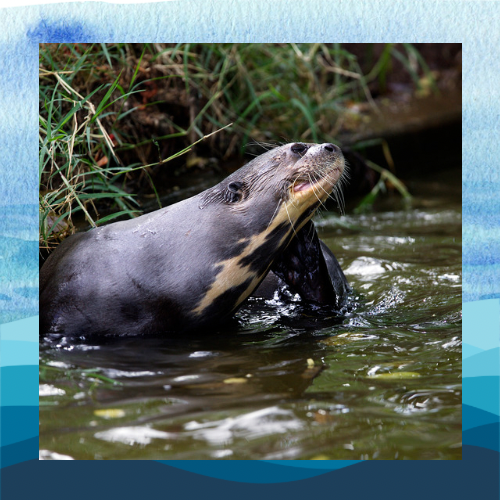
Diet and Hunting Techniques
The giant river otter’s diet is primarily composed of fish, with a preference for species like catfish, perch, and characins. They are also known to consume crustaceans, small mammals, and occasionally caimans or anacondas. Hunting is often a group activity, with otters working together to herd fish into shallow waters or underwater vegetation where they can be easily caught. This cooperative hunting technique allows them to take down larger or more elusive prey that would be difficult for a single otter to capture.
Once a fish is caught, the otter will hold it firmly in its forepaws and consume it headfirst, often while floating on its back. This feeding behavior is both efficient and ensures that the otters get the most out of their catch. They are also known for their ability to dive and swim with incredible agility, using their webbed feet and powerful tails to propel themselves through the water with ease.
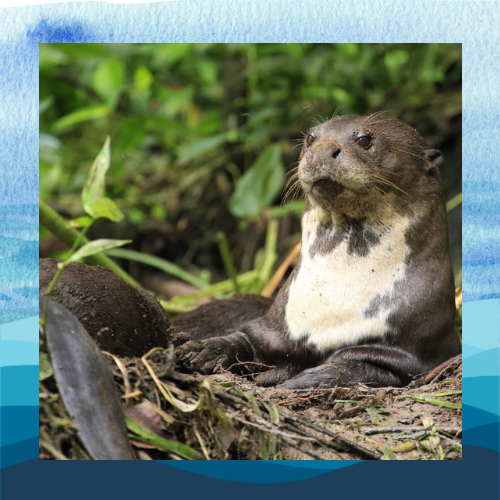
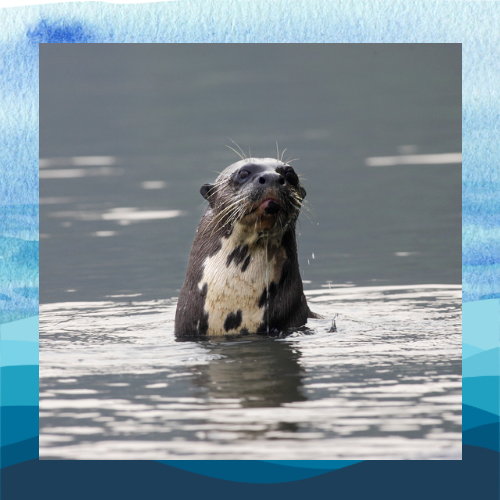
Reproduction and Lifespan
The breeding season for giant river otters typically occurs during the dry season, when water levels are lower, making it easier to catch prey and raise young. After a gestation period of about 65 to 70 days, the female gives birth to a litter of 1 to 5 pups, usually in a secluded den. The pups are born blind and helpless, relying entirely on their mother and other group members for care.
The entire family plays a role in raising the young, with older siblings often helping to protect and feed the new pups. By the time they are three months old, the pups begin to learn how to swim and catch fish, though they will continue to rely on their mother’s milk for several more weeks. The young otters typically remain with their family group until they are about two years old, at which point they may leave to form their own group or join an existing one.
Giant river otters can live up to 10 years in the wild, though some individuals have been known to live longer in captivity.
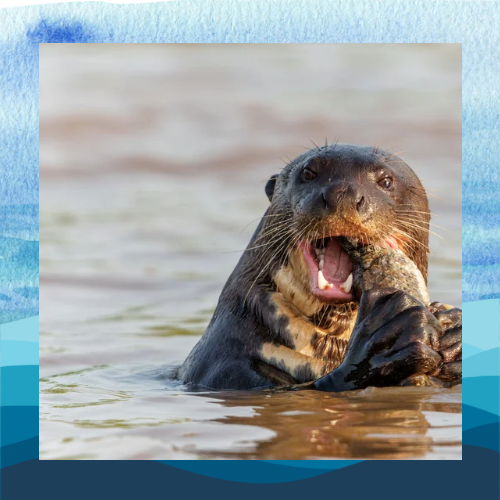
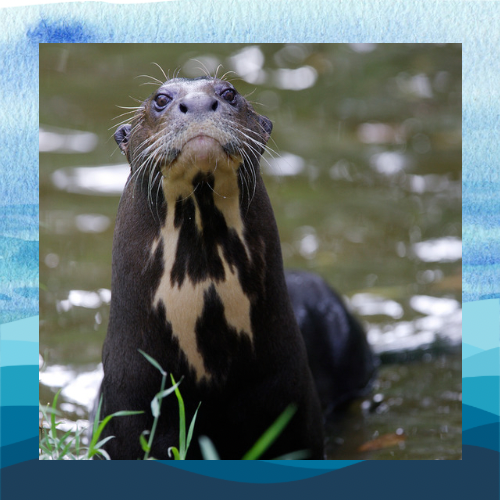
Fun Facts and Unique Characteristics
• Size Matters: The giant river otter is the longest of all otter species, with some individuals reaching up to 6 feet in length.
• Vocal Communication: These otters have one of the most complex vocal repertoires of any carnivore, with over 20 distinct calls used for communication within their social groups.
• Group Living: Giant river otters are one of the few otter species that live in large, cooperative groups, which helps them defend against predators and improve their hunting success.
• Unique Markings: Each otter has a unique pattern of cream-colored markings on its throat, which researchers use to identify individuals.
• Super Swimmers: Giant river otters are incredibly agile in the water, capable of swimming at speeds up to 14 kilometers per hour and diving to significant depths in search of prey.
• Territorial Behavior: Giant river otters are highly territorial and will aggressively defend their home range from other predators, including jaguars and caimans. Their strong group dynamics and vocal communications help them maintain dominance in their territory.
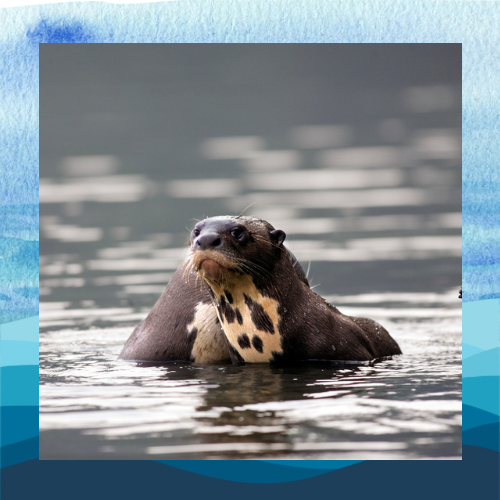
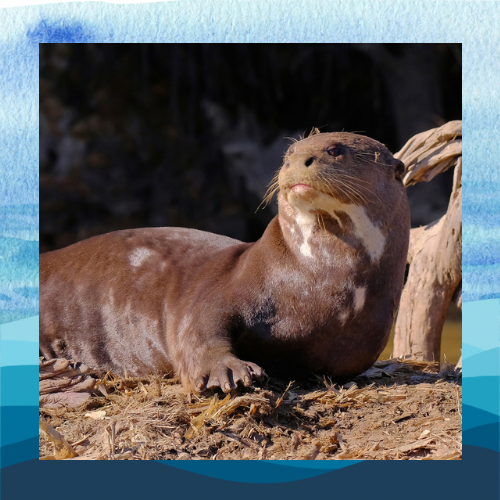
The Wolf of the River
The giant river otter is often referred to as the “wolf of the river” because of its highly social behavior and cooperative hunting techniques, which are reminiscent of wolves. Here are the key reasons behind this nickname:
1. Pack Hunting: Just as wolves hunt in packs on land, giant river otters often hunt in groups in the water. This cooperative approach allows them to effectively catch prey, especially fish, by working together to corral or drive fish into shallow areas or against obstacles, making them easier to capture.
2. Social Structure: Like wolves, giant river otters live in family groups, which can include a breeding pair and their offspring from multiple years. These groups, often called “clans,” are tightly knit, with members working together to defend their territory, raise young, and hunt. The strong social bonds within these groups are a key characteristic shared with wolves.
3. Territoriality: Giant river otters, much like wolves, are highly territorial animals. They patrol and defend their home ranges from intruders, using vocalizations, scent markings, and aggressive behavior to maintain control over their territory.
4. Top Predator Status: Both wolves and giant river otters are apex predators in their respective environments. This means they play a critical role in regulating the populations of prey species, maintaining the balance within their ecosystems.
The combination of these traits—cooperative hunting, social living, territoriality, and being top predators—draws a strong parallel between the behavior of giant river otters and wolves, leading to the nickname “wolf of the river.”
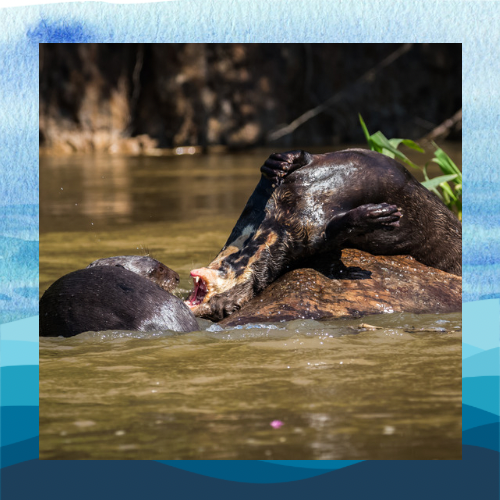
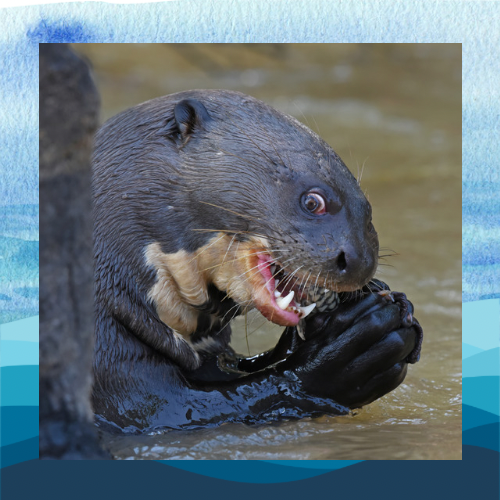
Conservation Status and Threats
Despite their fascinating characteristics and ecological importance, giant river otters are currently listed as “Endangered” by the International Union for Conservation of Nature (IUCN). Their populations have been significantly reduced due to habitat destruction, pollution, and illegal hunting. The loss of wetland habitats to agriculture, mining, and dam construction has fragmented their populations, making it difficult for otters to find suitable territories and mates.
In addition, to habitat loss giant river otters have been targeted by poachers for their thick, luxurious fur, which was highly valued in the past. While commercial hunting has largely been curtailed, illegal hunting and fishing practices still pose a threat to their survival. Mercury contamination from gold mining operations also impacts their health and the health of their prey, leading to further declines in population.
Conservation efforts are underway to protect and restore the habitats of giant river otters, including the establishment of protected areas and national parks in key regions of South America. These initiatives, along with increased awareness and education, offer hope for the future of this unique species.
References
1. Duplaix, N. (1980). Observations on the ecology and behavior of the giant otter Pteronura brasiliensis in Suriname. https://www.persee.fr/doc/revec_0249-7395_1980_num_34_4_4073
2. Carter, S. K., & Rosas, F. C. W. (1997). Biology and conservation of the giant otter Pteronura brasiliensis. https://www.iucnredlist.org/species/pdf/164580466
3. Groenendijk, J., Hajek, F., & Recharte, M. (2005). Surveys of the giant otter Pteronura brasiliensis in Peru. https://www.iucnosgbull.org/Volume17/Groenendijk_et_al_2000.pdf
4. Ribas, C., Damasceno, G., Magnusson, W. E., & Leuchtenberger, C. (2012). Giant otters feeding on caiman: Evidence for an expanded trophic niche of recovering populations. https://www.eventus.com.br/atbc2012/OttersFeedingOnCaiman.pdf
